Galeomorphi
Pretty much the only excitement is the presence of an anal fin. However, each group has its own special characters.
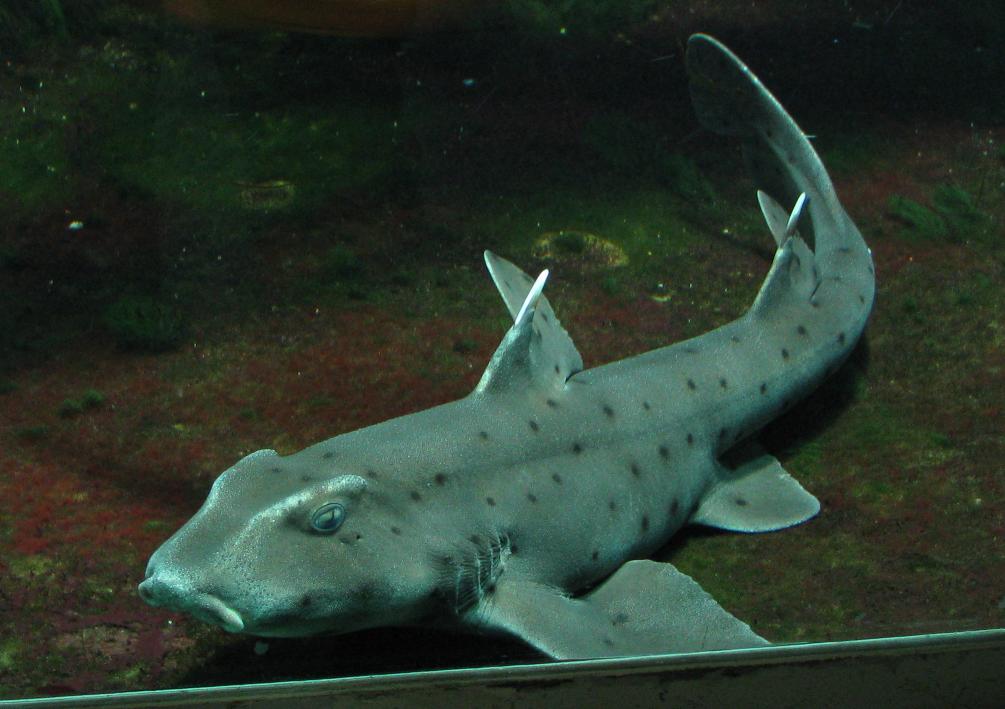
Heterodontiformes: Bullhead Sharks
One family (Heterodontidae) and one genus (Heterodontus). Most sharks have teeth that are all identical except for their size, but these sharks have different teeth for different feeding purposes, giving them the name Heterodonts (different teeth). Besides the teeth situation (see above), heterodontiforms have a spine on both their first and second dorsal fins. They have crests above their eyes, supposedly giving them their name (I've never seen a bull with a head like a shark...). There is a nasolabial groove, which connects the nostrils to the mouth. These sharks are oviparous (egg-laying), and produce screw-shaped eggs, which they literally screw into crevasses.
Orectolobiformes: Carpet Sharks
These sharks also have the nasolabial groove (whoaaaaa). They have five gill slits, with the fifth overlapping with the fourth...I'm not completely sure how that works, but the books do not lie.
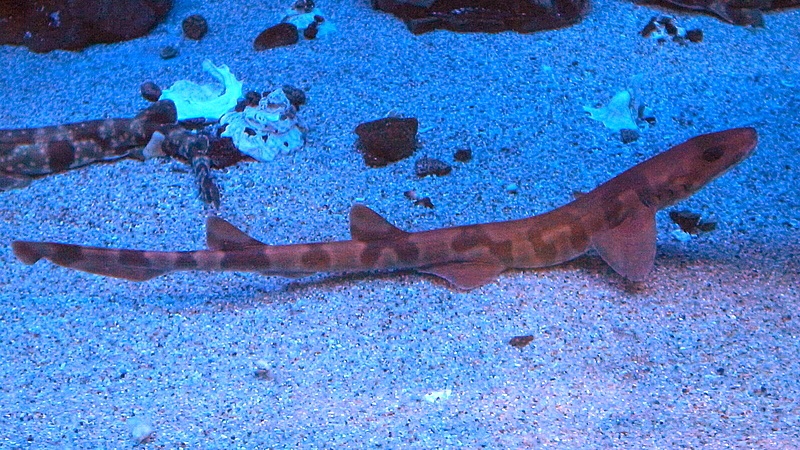
"By OpenCage Systems (http://opencage.info/pics.e/large_17665.asp) [CC BY-SA 2.5], via Wikimedia Commons
Parascylliidae: Collared Carpet Sharks
Supposedly they can camouflage themselves on the sea floor? That's about as exciting as it gets, folks.
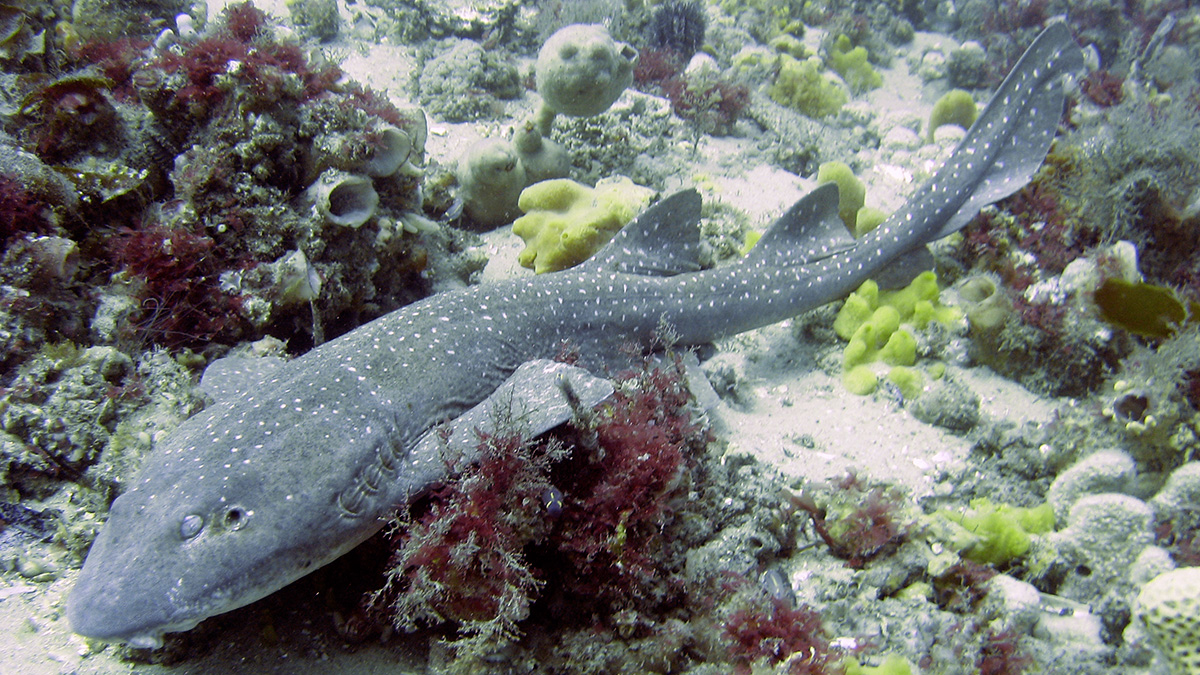
Brachaeluridae: Blind Sharks
Whoa, these sharks are blind! Not really, folks. The name came from pulling the sharks out of the water, at which point they would close their eyes and seem to be eyeless. I guess fishermen weren't as observant then as they are now.

Orectolobidae: Wobbegongs
Is that a pile of seaweed on the bottom? No, its a Wobbegong! Their common name is Aboriginal for "shaggy beard." These sharks have a fringe of barbels around their mouths, possibly for camouflage. Their brownish coloring helps to finish the camouflage job. Wobbegongs are ambush predators, lying in wait for tasty fishies to come along for one last swim.
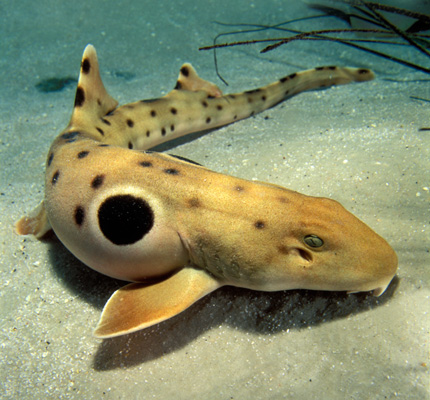
Hemiscylliidae: Bamboo Sharks
Also known as longtailed carpet sharks due to their, YOU GUESSED IT, long tail! They also have distinctive barbels (those aren't boogers).
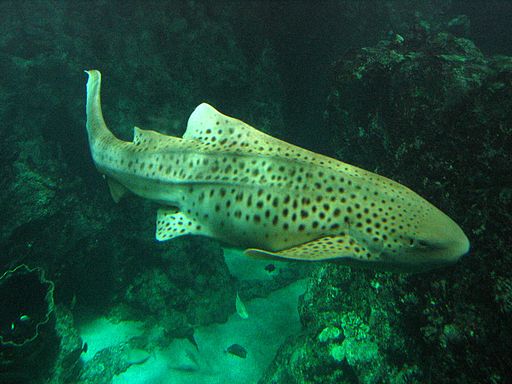
"By Thesupermat (Own work) [GFDL or CC BY-SA 3.0], via Wikimedia Commons
Stegostomatidae: Zebra Sharks
There is only one species, Stegostoma fasciatum, in this family. It gets its name from the striped pattern of the juvenile, which becomes a spotted pattern as the shark matures. The shark can also be identified by the presence of five distinct ridges running dorsally and laterally down its back. It also has an extremely long tail, but the name "longtailed carpet shark" was already taken.
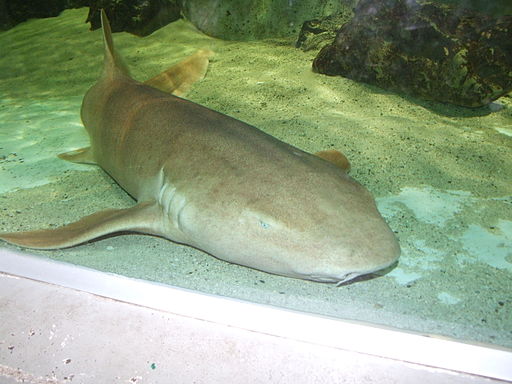
"By Pierre Wasser (von mir) [CC BY-SA 2.5], via Wikimedia Commons
Ginglymostomatidae: Nurse Sharks
If you've been to any major aquarium, you've most likely seen a nurse shark laying quietly on the seafloor. These sharks don't need to constantly swim, instead pumping water across their gills while laying dormant. They also have distinctive barbels on their jaw.
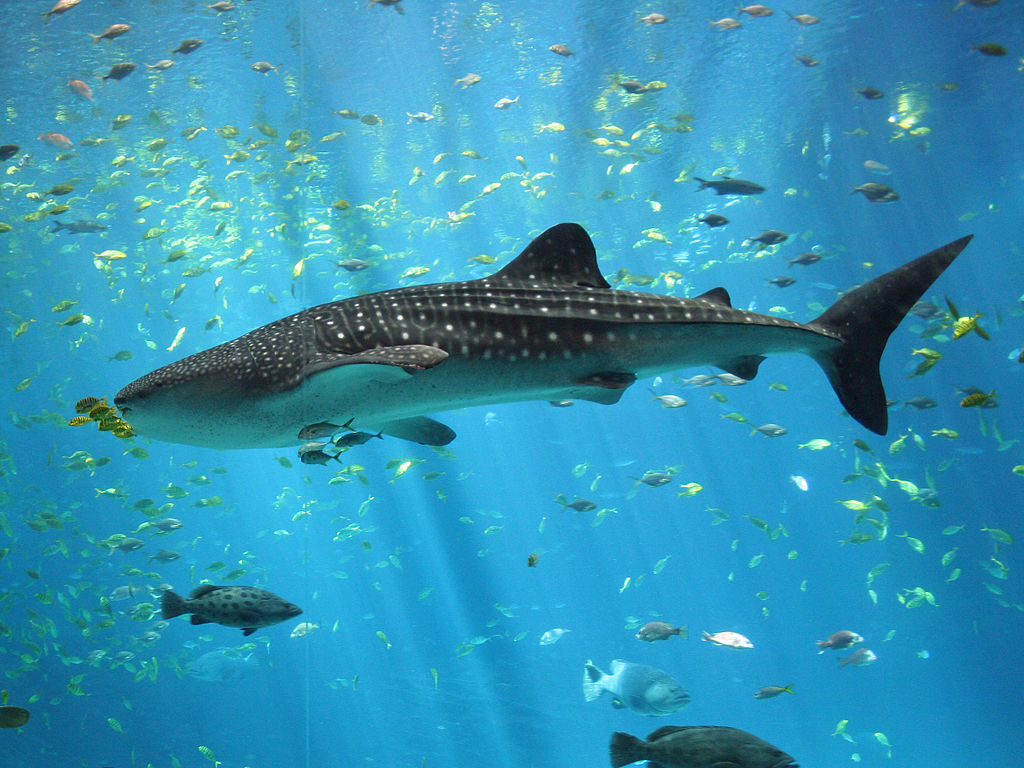
"By ZacWolf [CC BY-SA 2.5], via Wikimedia Commons
Rhincodontidae: Whale Sharks
You want big? The whale shark is HUGE! The largest recorded specimen was almost 13 meters long, and weighed over 20 metric tons! It is the largest fish alive today, and would be the largest vertebrate, except for real whales. Despite its large size, the whale shark feeds on plankton, and is harmless to humans! If you can't identify it based on it's large size...it has a blue coloration with white spots, and three ridges running down each side of the body. It has a large mouth with tiny teeth, and small eyes on either side of the mouth.
Lamniformes: Mackerel Sharks
This order has two dorsal fins (wow!), five gill slits (no way!) and a mouth that extends behind the eyes (crazy)!. Although the order does not have many exciting characteristics, you may find each separate family to have its own fascinating characteristics.
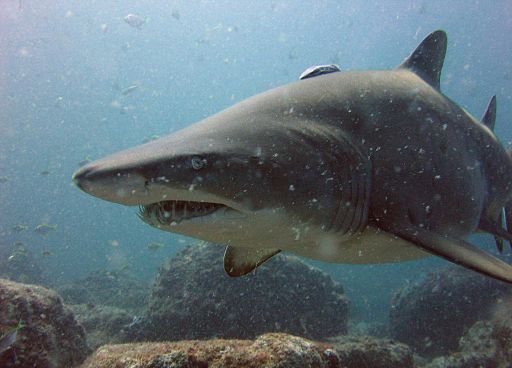
"By Richard Ling (Flickr) [CC BY-SA 2.0], via Wikimedia Commons
Odontaspididae: Sand Tiger Sharks
Another aquarium favorite! Sand tigers are easily recognized by their snaggletoothed grins, making them seem quite threatening. However, they are not known to attack humans. TWO COOL FEATURES: Sand tigers give birth to two pups at a time. The pups feed not only on yolk in the womb, but also other eggs that the mother produces! How's that for sibling rivalry? Sand tigers are also known to gulp air into their stomach to alter their buoyancy, most likely as a feeding strategy to sneak up on prey.

Mitsukurinidae: Goblin Sharks
One of my favorites! There's only one species, Mitsukurina owstoni, in this family, and boy is he a weird one! This shark is undeniably recognizable by its extremely elongated rostrum, which it uses to sense its prey, using the Ampullae of Lorenzini. The jaws are much more protrusible than other shark species, and it has extremely needle-like teeth. Take a look at this crazy video of a diver getting "bit" by a Goblin Shark! At 30 seconds in, you can watch the jaws protrude in slow motion!
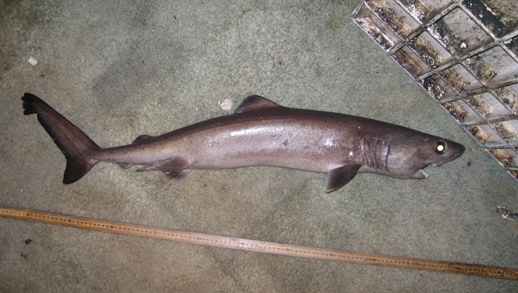
"By NOAA Observer Program [Public domain], via Wikimedia Commons
Pseudocarchariidae: Crocodile Sharks
Watch out, because this shark is watching you! There is only one species, Pseudocarcharias kamoharai. The crocodile shark has exceptionally large eyes compared to its small body size. Like the sand tiger, the embryos also eat the mother's eggs while in the womb.

Megachasmidae: Megamouth Sharks
And you thought your little sister had a big mouth... There is only one species, Megachasma pelagios. The next largest shark after the whale and basking sharks, the megamouth shark was not discovered until 1976, when it was found tangled in an anchor near Hawai'i. Along with its larger brethern, it feeds on plankton, and has luminescent tissue in its mouth to attract its prey at night. Unlike most other laminids, the megamouth does not have a large snout in front of its mouth.
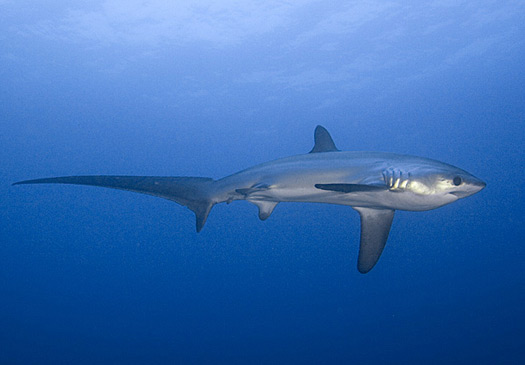
Alopiidae: Thresher Sharks
There is one genus, Alopias, with three species. This family is characterized by its elongated upper caudal fin, which can reach the same length as the body. Thresher sharks follow schools of fish into shallow water, and use their tail to stun prey.
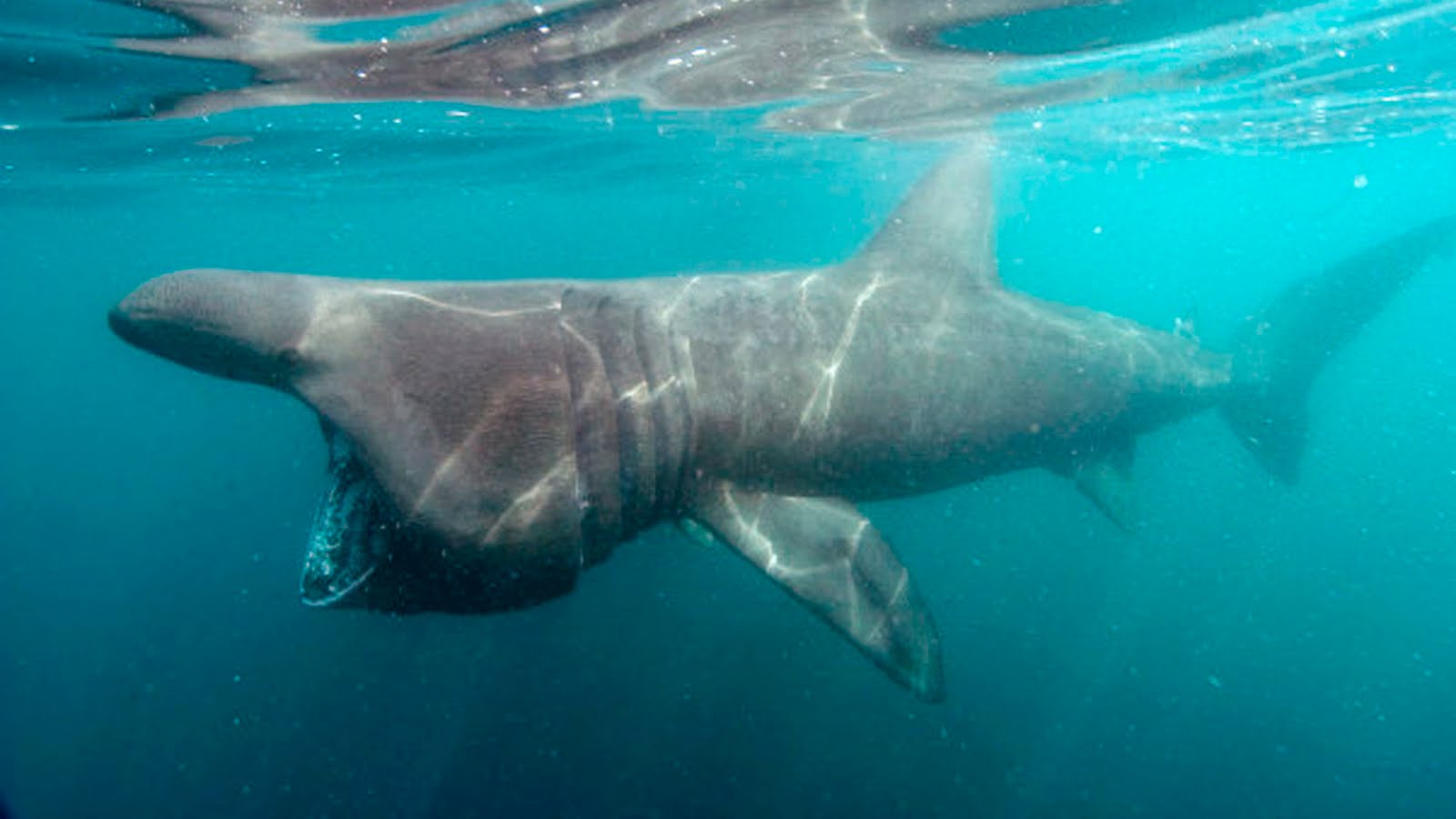
Cetorhinidae: Basking Sharks
The last of the large, plankton-eating sharks, there is one species in this family, Cetorhinus maximus. This species has freakishly large gill slits, which extend from almost the dorsal to ventral surface. The mouth is very large, and the shark swims with it wide open in order to capture plankton, using its gill rakers to filter them from the water. It is thought that the basking shark hibernates when there is little plankton to be found, shedding its gill rakers and lying dormant in deep waters until plankton blooms once more.
Lamnidae: Mackerel Sharks
This family contains some of the most widely recognized sharks. These sharks have relatively large teeth, and noticably smaller second dorsal fin, compared to the first dorsal and caudal fin. They are also known for being endotherms, as they have a countercurrent exchange mechanism in their muscles which allows the heat from their blood to keep their muscles warm while they swim. Let's look at the different genera!
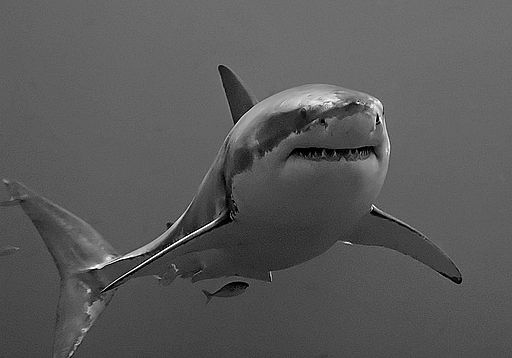
"Pterantula at the English language Wikipedia [GFDL, CC-BY-SA-3.0 or CC BY 2.5], via Wikimedia Commons
Carcharodon
There is only one species, Carcharodon carcharias, but it is the most recognized species of shark on the planet: THE GREAT WHITE SHARK. The Great White is the largest meat-eating shark, and has more recorded attacks on humans than any other species. Great Whites don't actually have many exciting characteristics other than they are large and in charge. They do have prominent countershading, seen by their great dorsal side and white ventral side. This allows them to blend in with the dark bottom when seen from above, and the light from the sky when viewed from below.
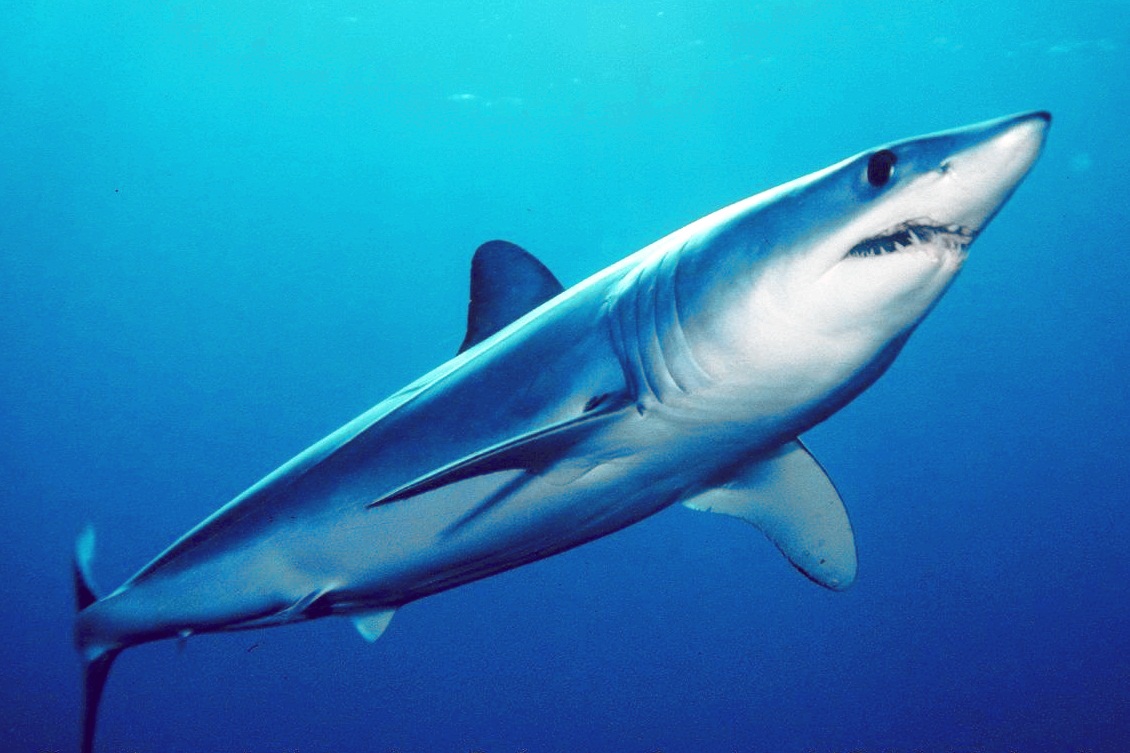
Isurus
This genus contains two species of Mako sharks. The mako is considered the fastest shark, being recorded as swimming almost 75km/hr. The mako has distinct teeth, which are very skinny and slightly curved inwards. The Longfin Mako differs from the Shortfin Mako by its elongated pectoral fins (who would have guessed).
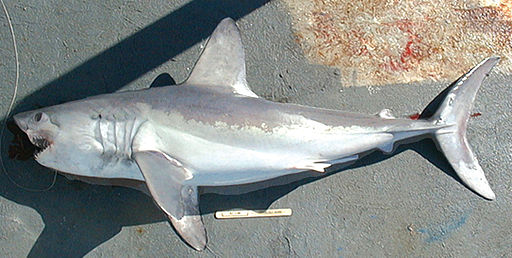
"By NOAA [Public domain], via Wikimedia Commons
Lamna
This genus includes the salmon and porbeagle sharks. It has three-cusped teeth, and a thicker midsection than most other sharks.
Carcharhiniformes: Ground Sharks
The most exciting feature of this order is the presence of the nictitating membrane! This membrane is a third eyelid, which provides protection, especially during feeding.
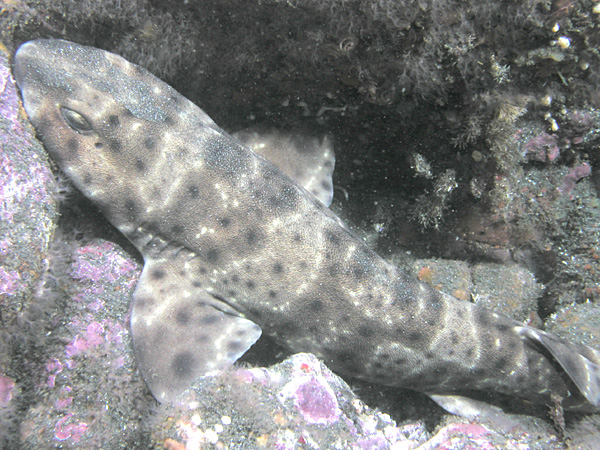
Scyliorhinidae: Cat Sharks
This is the largest shark family, with over 150 species. They are named because of their cat-like eyes. Many of the species are not well studied. However, the genus Cephaloscyllium contains the swell sharks. This genus is named because of their ability to swell their bodies with water or air if threatened by a predator.
Proscylliidae: Finback Cat Sharks
Nothing too exciting about this family, sorry. Stay tuned for updates.

Pseudotriakidae: False Cat Sharks
This group is incorrectly named, because they are not similar to Triakidae. These sharks have a very thin, elongated body. This family includes a genus named Gollum for the Lord of The Rings character. One, in fact, might say this shark is...precious...
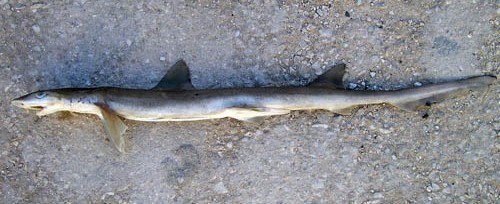
Leptochariidae: Barbeled Hound Sharks
There is only one species, Leptocharias smithii in this family. This shark has nasal barbels and oval eyes. Males have enlarged front teeth, showing sexual dimorphism.
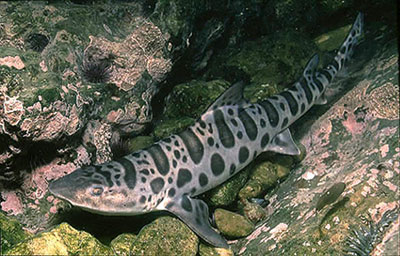
Triakidae: Hound Sharks
This family doesn't have too many exciting features either. Some members of this family are as follows:
- Whiskery Shark (Furgaleus macki): Named because of its barbels
- Soupfin Shark (Galeorhinus galeus): Used for shark fin soup (obviously), also a good source of Vitamin A from its liver
- Iago: Genus named after a villain from Othello (or perhaps from Aladdin?)
- Gummy Shark (Mustelus antarcticus): Named because of their teeth (how does a shark have gummy teeth...)
Hemigaleidae: Weasel Sharks
Some of these shark species are named because of their curved teeth which protrude from their mouths when closed, such as the Hooktooth Shark (Chaenogaleus macrostoma) or the Snaggletooth Shark (Hemipristis elongata).
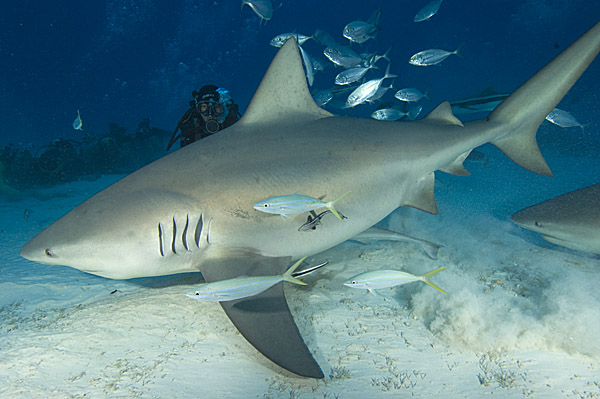
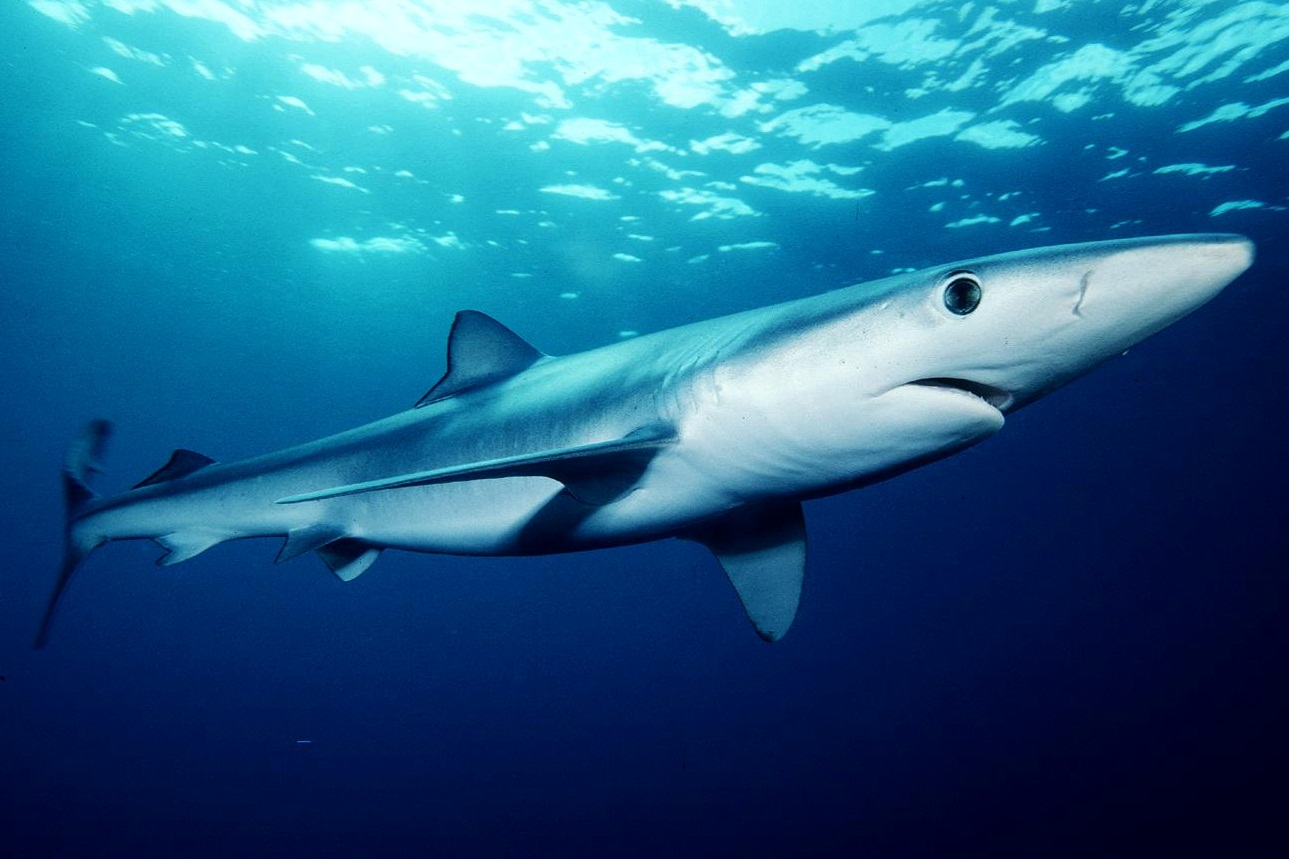
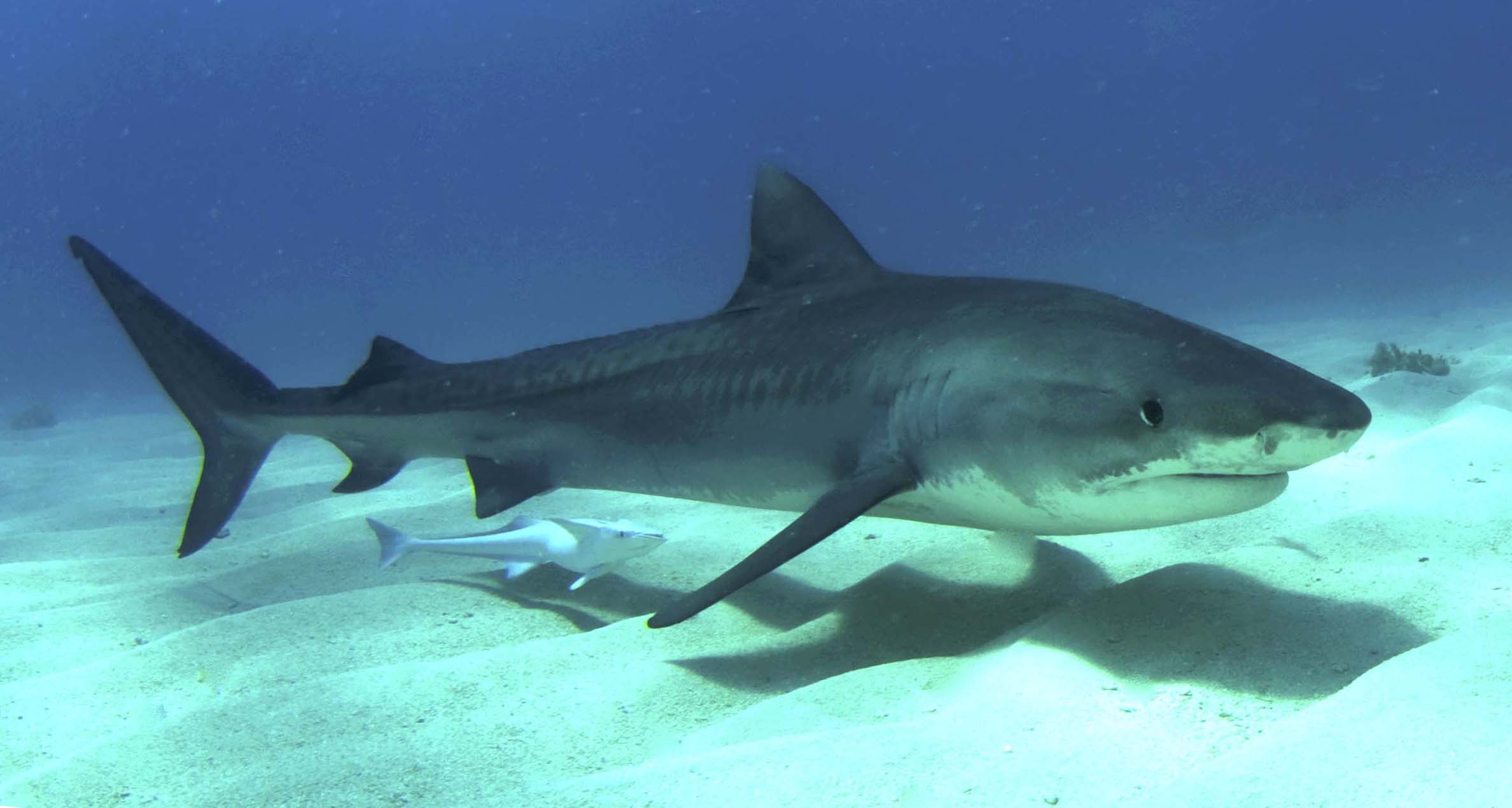
Carcharhinidae: Requiem Sharks
This family has numerous species of varying interest. Shall we begin?
- Grey Reef Shark (Carcharhinus amblyrhynchos): Well known for performing a threat display before attacking
- Nervous Shark (Carcharhinus cautus): This shark becomes very timid around humans, hence the name
- Spinner Shark (Carcharhinus brevipinna): The name comes from its habit of spiraling upwards into schools of fish
- Galapagos Shark (Carcharhinus galapagensis): They are found in shallow waters near shore and can often be dangerous to divers
- Silky Shark (Carcharhinus falciformis): The name comes from the smooth feel of this shark's skin
- Bull Shark (Carcharhinus leucas): This shark is able to survive in freshwater, and has been found far upstream, even in the Mississippi
- Oceanic Whitetip Shark (Carcharhinus longimanus): This shark has extremely long pectoral and dorsal fins, which are tipped with white
- Tiger Shark (Galeocerdo cuvier): Named for the striped juveniles, are considered one of the most dangerous sharks due to their interest in eating anything
- Ganges Shark (Glyphis gangericus): Lives in the freshwater of the Ganges, known for attacking people
- Lemon Shark (Negaprion brevirostris): Named for its coloration, they are often used as good subjects for shark studies
- Blue Shark (Prionace glauca): This shark has a slender shape, and is well known for making long distance migrations
- Daggernose Shark (Isogomphodon oxyrhynchus): The name originates from its sharply pointed, flattened snout
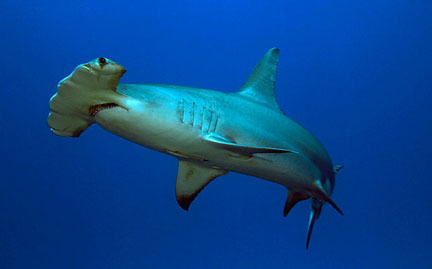
Sphyrnidae: Hammerhead Sharks
The hammerheads are a very memorable family due to the interesting shape of their head. Their eyes and nostrils are located on flattened extensions on either side of the head. This modification is thought to have multiple purposes. The position of the eyes allows the shark to observe the environment above and below. The separation of the nostrils may give the shark a greater ability to discern the direction that a scent is coming from. The flattened head may provide greater mobility for cutting through the water. The head can also be used to probe the ocean bottom for prey, and the presence of Ampullae of Lorenzini assists the shark in its search for prey.